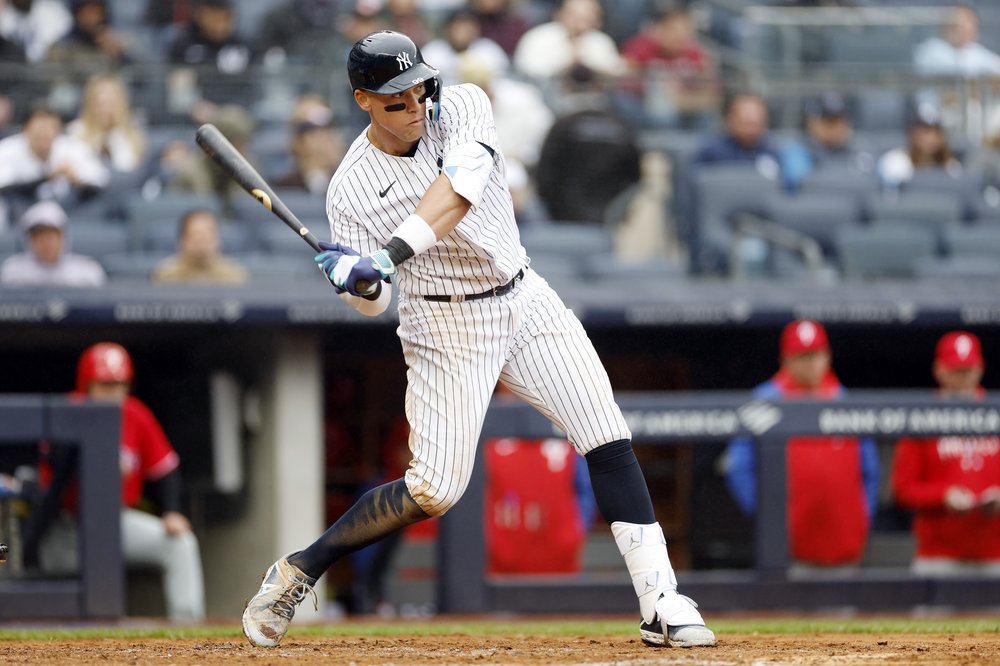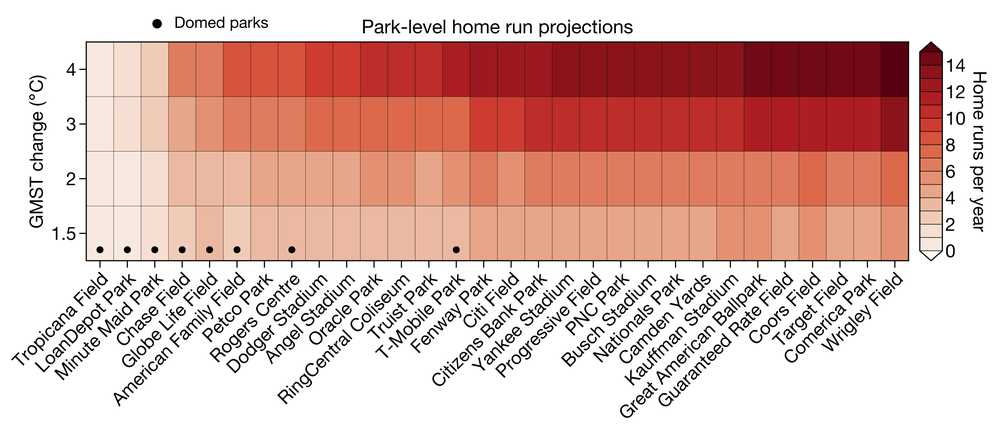How climate change is helping the Yankees and Mets hit home runs
April 7, 2023, 8:01 a.m.
A new climate study answers questions about how warmer air temperatures influenced a recent boom in MLB home runs.

Warming temperatures have allowed Major League Baseball players to hit more than 500 additional home runs since 2010, according to new research from Dartmouth College.
While this climate juicing may not bother fans who enjoy homers, it hints at the hidden ways that global warming will influence the nation’s pastime — from batting records to health concerns related to extreme heat.
“The only reason we can make an attribution of how much global warming has altered home runs in Major League baseball is because we have the data to do so,” said Dr. Justin Mankin, an assistant professor of geography and a climate scientist at Dartmouth College, who co-led the study published Friday in the Bulletin of the American Meteorological Society. “It says nothing of the effect of things like heat stroke or heat mortality — on players and patrons and staff.”
MLB fans and climate watchers have long mused about a potential connection between warming temperatures and home runs, including a baseball-loving graduate student in Mankin’s lab named Christopher Callahan who launched the project. The reasoning is that as air heats up, its molecules get excited and start pushing away from each other more and more. The result is that the air becomes less dense, meaning things can move through it easier.
“That ball flying through the ballpark, it's just gonna encounter less air resistance, and there'll be less drag on it,” Mankin said. "Baseball is at its core a game of ballistics. So the physics are pretty well understood."
But their study goes deeper — examining how temperatures influenced home runs across more than 100,000 MLB games played from 1962 to 2019. Upgrades to stadium cameras, made in 2015, allowed the Dartmouth team to calculate the launch speed and launch angle of 220,000 individual batted balls from recent years.
These Statcast cameras, as they’re known, meant that the scientists could account for other variables that might influence the chances of a home run, such as the skill of the pitcher or hitter. Their analysis could directly compare a ball leaving a bat at the same angle and speed on a warm night versus a cold night.
Yankee Stadium experienced 27 more home runs from 2010-2019 due to historical global warming, while it was 24 extra for Citi Field.
Stretching back to 1962, every 1-degree-Celsius increase in daily high temperature raises the number of home runs by nearly 2% for games played in open-air ballparks. This climate juicing is more pronounced for day games played in the early afternoon versus night games when temperatures are cooler, the study found.
The pattern held steady for all open-air stadiums and when ballparks with retractable roofs weren’t covered. And as one might expect, air temperatures had an insignificant effect on domed stadiums.
Yankees Stadium and Citi Field rank in the middle of the pack in terms of the climate boost. The researchers estimated that Yankee Stadium experienced 27 more home runs from 2010-2019 due to historical global warming, while it was 24 extra for Citi Field.

The 577 additional home runs — the ones linked to climate change — amounted to a 1% boost from 2010 to 2019. (Major Leaguers hit just under 52,000 home runs in this span.) This climate bump is small — but a statistically significant contributor when one considers that New York Yankee Aaron Judge only beat the single-season record for the American League by one homer last year.
That’s not to say Judge, a once-in-a-generation talent, owes climate change for his record. For one, other factors played a big role in the recent home run boom, namely the design of baseball stitches. The size of outfield fences, their distance from home plate, the composition of bats and the broader use of statistics (the "Moneyball-ification" of baseball, as Mankin defined it) have also factored into home run trends over the years.
But Andrew Pershing, the director of climate science at the nonprofit Climate Central, said last summer — when Judge went on his epic run — was warmer than normal in New York. A direct study would be needed to see how warm nights factored into his season. Pershing added that baseball records are something to consider given modern players exist in a fundamentally different climate — that’s also filled with more extreme heat and more heavy rain events.
“Mickey Mantle and Babe Ruth, and all these great players who played last century,” Pershing said. “Lots of other things have changed about the game, but this [climate] is something that every night throughout [Judge’s] career, he’s gonna have a higher potential just because of the climate change.”
Past baseball legends were also disadvantaged because of how humans treated the environment. Soot and other air pollution created by heavy industry and sites like coal plants actually contributed to regional cooling from the 1960s to 1980s. The Dartmouth study found that this trend corresponded to a decreased rate of home runs from 1962 to 1995.
Going forward, warming is only expected to intensify as humans struggle to curb carbon pollution, and the Dartmouth study estimated that rising temperatures could account for a 10% boost in home runs by 2100, relative to what we've seen over the past 20 years.